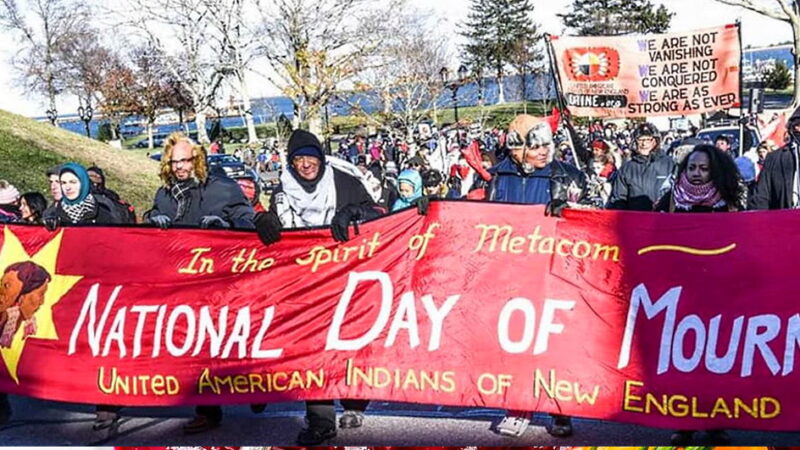National Day of Mourning is observed in the United States on the fourth Thursday of November each year. It’s a solemn holiday led by Native Americans to honor the memory of ancestors who suffered violence and displacement after European colonization.
History
In 1620, the first colonists arrived in Massachusetts and soon began to evict, persecute, and threaten the Native population. To honor those who resisted and suffered, Native Americans and supporters gather annually on Cole’s Hill in Plymouth—where the first observance took place in 1970. The event has grown every year, drawing both Native and non-Native participants.
Interesting Facts
- The total number of Indigenous lives lost during colonization remains unknown—Native Americans were not counted separately in the U.S. census until 1860.
- One resistance leader is remembered saying, “We were glad to meet the Europeans; we thought they brought light.”
- There are now around 5 million Native Americans, mixed-heritage descendants, and community members in the United States.
- In 1825, a federal law allowed settlers to claim Indigenous lands “discovered” by them.
- Many English words come from Native languages, including “potato,” “tomato,” “bison,” and “chia.”
How to Take Part
- Learn about America’s Indigenous histories, cultures, and the goals of UAINE.
- Support Indigenous-led organizations—volunteer or donate to causes that defend Native rights.
- Attend or organize local events on National Day of Mourning to show solidarity.
- Share educational resources and personal reflections on social media with #DayOfMourning.
When is National Day of Mourning in 2025?
National Day of Mourning is observed on the fourth Thursday of November each year.
Observations
| Weekday | Month | Day | Year |
|---|---|---|---|
| Thursday | November | 27 | 2025 |
| Thursday | November | 26 | 2026 |
| Thursday | November | 25 | 2027 |
| Thursday | November | 23 | 2028 |
| Thursday | November | 22 | 2029 |




